VOS0 and VOS1-S were the OSs for HITAC L series distributed processing computers. VOS0 was the OS for HITAC L-330 while VOS1-S was the OS for HITAC L-340. VOS0 and VOS1-S were developed on the concept of simplicity, computer networks and coexistence with the M series, and had various features for achieving distributed processing.
Figure 1 shows an example of the configuration for a distributed processing system that connected HITAC M series computers and HITAC L series computers.

- Home >
- Historical Computers in Japan >
- Mainframe OS >
- VOS0, VOS1-S
【Hitachi】 VOS0, VOS1-S
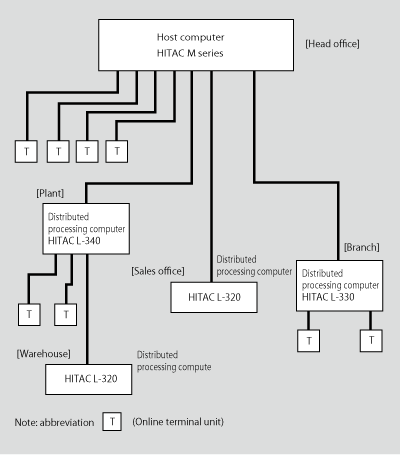
Hitachi started shipping VOS0 and VOS1-S in 1978.
VOS0 and VOS1-S had the following features.
(1) NHELP, a language for creating business programs that non-professionals can use
- The user can create a business program just by creating simple parameters in both batch processing and online processing.
- The user can build an online system easily and in a short period thanks to the NHELP online system.
- Operations, job control languages, service programs, system generation, etc. were comprehensively simplified.
Figure 2 shows the configuration for the NHELP online system.
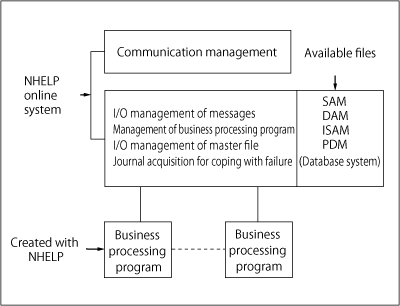
(2) Allows file transmission throughout the network
- L-330/L-340 are positioned as terminals of MSNA (M Series System Network Architecture) and HNA (Hitachi Network Architecture) on the network, and could also be used as host computers for distributed processing.
- Because they are equipped with service program FIT (FIle Transmission program), which allows file transmission between computers, the user can easily and efficiently transmit data that are distributed in different locations.
- L-330/L-340 are capable of executing remote batching in which they transmit a job to the central host computer, have it execute the job and acquire the result.
Figure 3 shows how a file is transmitted with FIT.
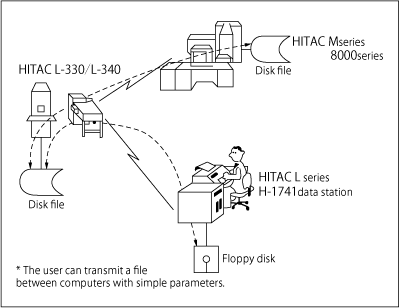
(3) Easy transition to VOS1 and from 8150PS
- Program languages, files, transmission procedures for communication circuits and job control languages were treated as subsets of the M series, making transition to VOS1 easy.
- To facilitate transition from 8150PS, a JCL converter, a file converter and a file compare routine were provided in addition to an emulator and a COBOL converter.
(4) A wide array of programs
- PDM, which realizes a database
- TMS-1, which realizes more advanced online processing
- A broad range of applications that support EDP of business operations
Figure 4 shows the programs that constituted VOS0/VOS-1S.
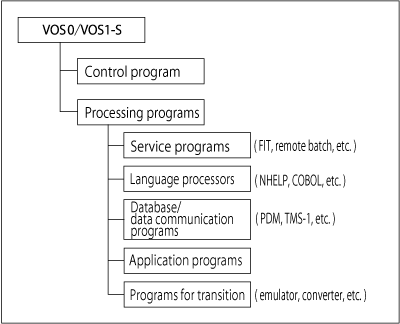
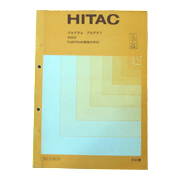 | 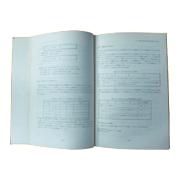 | |
| Cover of manual for VOS0 | Sample descriptions from the manual for VOS0 |
All Rights Reserved, Copyright (C) Information Processing Society of Japan
